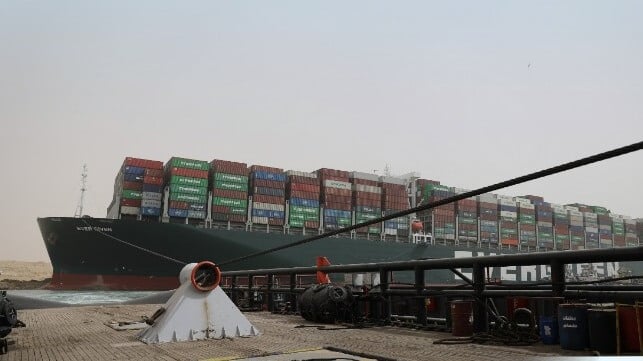New Analysis Counts the Cost of Maritime Chokepoint Closures

The world’s 11 busiest maritime chokepoints are increasingly becoming vulnerable and prone to the risk of closure due to politics, piracy, vessel accidents and other causes - eventualities that could have far-reaching impacts on international trade, commercial shipping and the global economy, according to a new study by a researcher at Duke University.
As evidenced by the global supply chain disruptions caused by the six-day blockage of the Suez Canal in March 2021, when mega boxship Ever Given ran aground, and the reduction in shipping through the Bosporus Strait since the onset of the Ukraine invasion in February 2022, chokepoints play a central role in international trade and global economic security.
However, blockage of any chokepoint is bound to lead to ship rerouting and increased transport distances, and thus increased transit times and shipping costs. Delays due to ship rerouting will also affect port operations: The main effect at ports of destination is a slowdown during a period of inbound shipping delays. followed by a surge in activity as the delayed cargos arrive all at once.
Commercial ships move more than 80 percent of cargo by volume and over 70 percent by value, and much of that trade relies on sea routes through one or more marine chokepoints. A new analysis by Duke University researcher Lincoln F. Pratson, published in the journal Communications in Transportation Research, shows that a lack of preparedness for choke point shutdown is bound to trigger ripple effects throughout the world's transport networks.
Using AIS and trade data from 2019, Pratson simulated closure scenarios in the Panama Canal, the Strait of Gibraltar, the English Channel, the Danish Straits, the Bosporus, the Suez Canal, the Strait of Bab el Mandeb, the Strait of Hormuz, the Strait of Malacca and (though not quite a chokepoint in the traditional sense) the South China Sea.
The simulations allowed him to estimate the types and amounts of trade that would be disrupted by each chokepoint’s closure, as well as how the closure could lead to the redirection of trade flows globally. He found that when international trade through one of the 11 chokepoints is impeded, transiting ship traffic gets backed up and subsequent shipping often gets redirected along longer routes to avoid the blockage.
Ports that initially experienced lulls in cargo-handling because of the closure become backlogged as the delayed cargoes arrive. The economic impacts of the changes can reverberate for months, with impact on all sectors heightened by the modern use of just-in-time supply chains.
“Having a pretty good idea of what to expect if there’s a prolonged closure of shipping in one of these 11 chokepoints would help governments, businesses and seaport managers develop strategies for reducing potential shipping and port delays or losses,” said Pratson, the Gendell Family Professor of Energy and Environment at Duke’s Nicholas School of the Environment.
The analysis shows the chokepoints estimated to carry the most trade in terms of both total value and total weight are the Malacca Strait and South China Sea, with the value of trade through the latter equaling five percent of global gross domestic product (GDP) in 2019 and exceeding the GDPs of all but the three largest economies in the world that year (the U.S., China and Japan).
The analysis also shows that geopolitical events could be a major threat to chokepoints and trade. While security risks to shipping persist in the usual hotspots (like the Straits of Hormuz and Bab el-Mandeb) there is growing apprehension over the potential for conflict in East Asia. The impact to global trade from a conflict in the region could be large: analysis suggests that the amount of trade passing through the East and South China Seas is at least $7.4 trillion.
